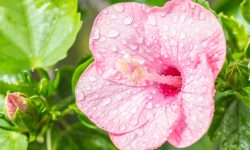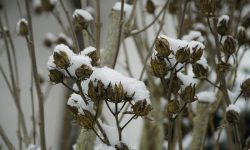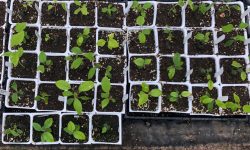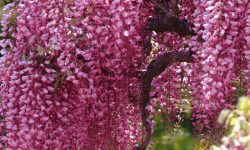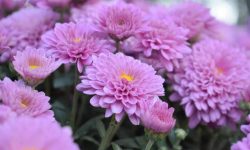Hibiscus tea is one of the most refreshing and colorful herbal drinks you can make at home. Its deep ruby color, tangy flavor, and natural health benefits make it a favorite among tea lovers. Fresh hibiscus flowers turn into a rich, vitamin-packed brew when harvested at the right time. Knowing when and how to collect them ensures both flavor and nutrition stay intact. Harvesting isn’t difficult, but it requires attention to timing, care, and the drying process that follows.
Proper drying and storage make the difference between good tea and great tea. When dried naturally, hibiscus keeps its aroma, vibrant color, and tart taste for months. You don’t need fancy tools—just patience and the right method. Whether you grow hibiscus in your garden or buy fresh blooms, learning how to harvest and dry them correctly helps you enjoy fresh, homemade tea anytime. It’s a simple, rewarding process that brings summer warmth to your cup all year long.
Understanding Hibiscus Varieties for Tea
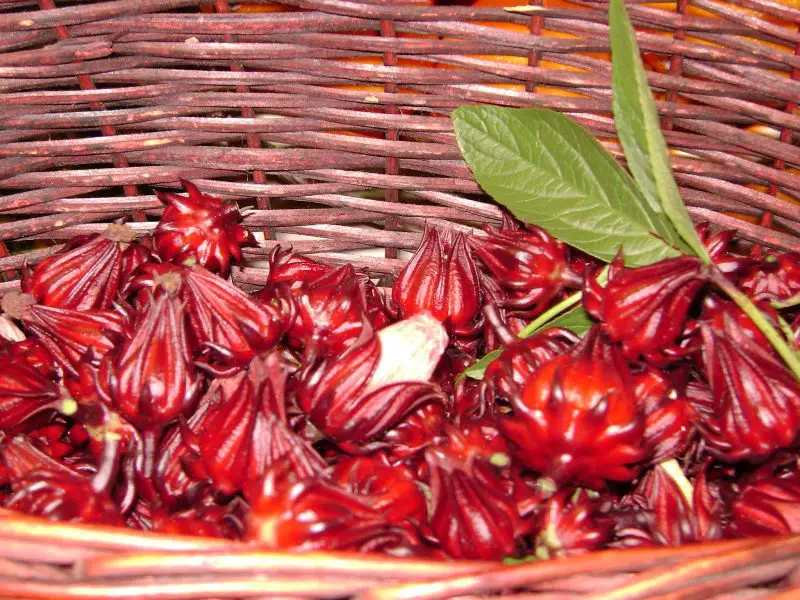
Not every hibiscus variety produces the same flavor, color, or quality for tea. The best and most widely used type is Hibiscus sabdariffa, known as Roselle. This tropical variety develops thick, red calyces rich in anthocyanins, vitamin C, and antioxidants. These calyces, not the petals, are what give hibiscus tea its signature deep crimson color and tart, cranberry-like taste. Roselle thrives in warm, sunny conditions with well-draining soil and moderate moisture. When grown properly, it produces large, juicy calyces ready for harvest about four months after planting. Its strong flavor and natural acidity make it perfect for herbal teas and flavored infusions.
Other varieties can be used but differ in taste and intensity. Hibiscus rosa-sinensis, the common garden hibiscus, produces soft petals with mild floral notes and little tartness. While safe for brewing, it lacks the rich tang found in Roselle. Hibiscus acetosella, or False Roselle, has dark red leaves and a sharp, earthy flavor similar to cranberries. Though less vibrant, it makes a pleasant alternative for blending teas. Gardeners often combine Roselle with these varieties for more complex flavors and colors. Choosing a suitable species ensures both great taste and visual appeal in your tea.
Climate and growing conditions influence the flavor of your hibiscus harvest. Roselle grows best in tropical and subtropical zones where temperatures stay above 70°F. In cooler climates, it can be grown in containers indoors with adequate sunlight. Strong plants produce more calyces, which dry well and retain flavor longer. Selecting the right variety and nurturing it carefully ensures you get rich, aromatic hibiscus tea that tastes fresh every time.
When and How to Harvest Hibiscus Flowers
When to Harvest Hibiscus
Timing is one of the most important factors in harvesting hibiscus for tea. The best time to collect is when the flowers have fully bloomed and their petals start to wither naturally. Once the petals drop, the red calyx forms at the base of the bloom—this is the edible part used for tea. Wait until it becomes plump, firm, and slightly waxy to touch. If picked too soon, the flavor turns sour and weak. Waiting too long causes the calyx to harden, fade, and lose its vibrant red pigment. Harvesting at the right time gives the perfect balance of tartness and aroma.
The best time of day for harvesting is early morning, once dew has dried but before sunlight gets too strong. This helps preserve color and moisture. Check your plants daily during blooming season, as hibiscus flowers open and fall within 24 hours. Frequent collection encourages more buds and extends the blooming period. Use clean gloves to handle the calyces to avoid contamination. Always pick only healthy, unblemished pieces for drying. Proper timing ensures your hibiscus tea will have a deep red color and a tangy, refreshing taste that stays true after drying.
How to Harvest Hibiscus
Harvesting hibiscus for tea requires patience and gentle handling to preserve the calyces’ quality. Use sharp, clean scissors or pruning shears to snip the calyces where they meet the stem. Handle each flower carefully, avoiding pressure that could bruise or tear the flesh. Damaged calyces lose flavor and spoil faster. After cutting, remove the green seed capsule from inside, leaving only the red calyx. The seeds can be stored for planting next season or dried separately. Working in small batches prevents the flowers from wilting before processing.
Choose a dry, sunny day for harvesting, as moisture trapped in the calyces encourages mold during drying. After collecting, rinse the pieces in cool, filtered water to remove dust and small insects. Spread them on a clean towel and pat dry. Avoid stacking or piling too many together. If your hibiscus grows in containers, trimming spent blooms also stimulates new flower growth. Regular harvesting keeps the plant active, producing continuous blooms through late summer. Careful handling ensures clean, vibrant calyces ready for drying and long-term tea storage.
Natural Drying Methods for Hibiscus
Drying hibiscus naturally is the best way to preserve its flavor and nutrients without using machines. Once you finish harvesting, rinse the calyces gently in cool water and remove any moisture with a soft cloth. Place them in a single layer on a clean tray, bamboo mat, or mesh surface to allow air circulation. Choose a warm, shaded area with good airflow, as direct sunlight can fade the color and weaken the taste. Natural air-drying usually takes three to seven days depending on humidity. Turn the calyces daily to ensure even drying and prevent mold growth.
If you live in a humid region, drying indoors near a sunny window or fan works better. Avoid using an oven or dehydrator on high heat since it strips away the floral aroma and vitamin content. Patience is key—slow drying keeps the deep red pigment intact and locks in the tangy flavor. Once the calyces feel crisp and break easily between your fingers, they are perfectly dried and ready for storage. Make sure there’s no moisture left, as damp pieces spoil quickly. Proper drying is what gives hibiscus tea its sharp, refreshing flavor when brewed.
After drying, let the hibiscus cool completely before sealing it in containers. Store in glass jars, paper bags, or airtight tins away from heat and sunlight. A well-dried batch can last for six months without losing taste. Label each container with the harvest date for freshness tracking. When dried naturally and stored correctly, hibiscus keeps its beautiful color, fresh aroma, and smooth tartness, ready to bring warmth to your teacup any time of the year.
How to Store Dried Hibiscus for Long-Lasting Freshness
Once your hibiscus calyces are fully dried and crisp, the next crucial step is proper storage. Let them cool completely before packaging to avoid trapped condensation, which causes spoilage. Choose glass jars, airtight tins, or thick paper bags that block air and light. Avoid plastic containers, as they hold residual moisture and alter flavor over time. If storing in jars, sterilize them first and dry them thoroughly. Fill each container about three-quarters full to allow minimal air movement. Label each with the harvest date and drying method for easy tracking. When stored correctly, dried hibiscus keeps its color, aroma, and taste for up to six months or longer.
Store your hibiscus in a cool, dark location away from heat sources, moisture, and sunlight. Excess light fades the deep red hue and dulls its sharp tang. Pantries, cabinets, or shaded kitchen shelves make excellent spots. If your home is humid, place a food-safe desiccant packet or a few grains of rice wrapped in cloth inside the container to absorb moisture. For large batches, divide your hibiscus into smaller jars to reduce exposure every time you open one. This method keeps the tea’s natural oils and fragrance intact much longer. Properly stored tea retains its fruity, refreshing scent for every cup.
Inspect your containers every few weeks for freshness. Give them a gentle shake to check for clumping or soft spots, which indicate moisture buildup. If any piece turns pale, dull, or moldy, remove it immediately. Keeping your storage area clean and dry prevents contamination and ensures long-lasting quality. With careful storage, your dried hibiscus will stay bright, flavorful, and ready to brew into a soothing, antioxidant-rich tea whenever you crave a vibrant, homemade drink.
Brewing the Perfect Cup of Hibiscus Tea
Brewing hibiscus tea is simple, yet small details make a big difference in flavor and aroma. Start with high-quality, well-dried hibiscus calyces that retain their deep red color and tangy scent. For every cup of water, use about one tablespoon of dried hibiscus. Rinse the calyces briefly to remove any dust before brewing. Use fresh, filtered water and bring it to a gentle boil. Once boiling, turn off the heat and add the hibiscus. Let it steep for eight to ten minutes depending on your preferred strength. Longer steeping gives a darker, tangier tea, while shorter times create a lighter flavor.
After steeping, strain the liquid into a cup using a fine mesh or cloth filter. The tea should appear ruby red with a tart, cranberry-like aroma. If you prefer a sweeter taste, add honey, agave, or a touch of cane sugar while the tea is still warm. For an extra twist, include cinnamon sticks, mint leaves, or a slice of orange during brewing. These ingredients balance the tartness and add depth to the flavor. For iced hibiscus tea, chill the infusion and serve over ice cubes with a sprig of mint for freshness.
Proper brewing not only enhances flavor but also preserves the hibiscus’s natural antioxidants and vitamin C. Always use non-metallic utensils to prevent flavor changes caused by reactions with acids. Enjoy your tea fresh for the best color and aroma. Regularly brewed hibiscus tea supports hydration, improves mood, and provides a cooling, energizing drink that feels refreshing any time of day. Whether served hot or cold, a perfectly brewed hibiscus tea brings both health and delight in every sip.
Health Benefits of Hibiscus Tea
Hibiscus tea is not only refreshing but also packed with impressive health benefits. Its vibrant red color comes from anthocyanins, powerful antioxidants that help protect the body from free radicals. Drinking hibiscus tea regularly supports heart health by helping maintain healthy blood pressure and cholesterol levels. The tea’s natural acids, including citric and malic acid, promote gentle detoxification and aid digestion. Because it contains no caffeine, hibiscus tea provides a soothing way to stay hydrated throughout the day without causing restlessness or fatigue. Its crisp, tart flavor also makes it a perfect alternative to sugary beverages.
One of the most notable benefits of hibiscus tea is its ability to support circulation and reduce oxidative stress. Studies show that hibiscus compounds may improve arterial health and promote balanced metabolism. The tea also contains vitamin C, which strengthens the immune system and supports collagen production for healthier skin. Its natural anti-inflammatory properties can help relieve mild swelling or discomfort, especially when enjoyed warm. Many herbal enthusiasts also use hibiscus tea to ease menstrual cramps and calm the digestive tract after heavy meals.
In addition to physical benefits, hibiscus tea supports relaxation and mental clarity. Its subtle aroma and bright color stimulate the senses while encouraging calm focus. Drinking a cup in the evening helps reduce tension after a busy day. When consumed regularly as part of a balanced lifestyle, hibiscus tea nurtures both body and mind. It offers a beautiful balance of wellness and enjoyment, making it one of the most beneficial herbal infusions you can include in your daily routine.
Common Mistakes to Avoid When Harvesting and Drying Hibiscus
Harvesting at the Wrong Time
One of the biggest mistakes when preparing hibiscus for tea is poor timing during harvest. Picking too early results in small, sour calyces with weak flavor. Waiting too long makes them hard, fibrous, and dull in color. The best time to harvest is when the calyces appear bright red, thick, and slightly firm. This stage guarantees the perfect tartness and full-bodied taste. Always avoid harvesting right after rain or early in the morning while dew remains. Excess moisture at this time promotes fungal growth and reduces the hibiscus’s natural acidity and aroma.
The right moment usually comes two to three weeks after the petals fall. Check your plants daily since blooms mature quickly under warm conditions. If harvested too late, the calyces start to dry and lose their vivid pigment before you can preserve them. Proper timing keeps the balance between tart and sweet flavors while maintaining that striking ruby-red tone. Consistent observation and gentle handling during harvest yield the highest-quality hibiscus for brewing.
Incorrect Drying Techniques
Even a perfect harvest can lose quality if drying isn’t done properly. One common mistake is drying hibiscus under direct sunlight. While it may seem fast, harsh light fades color and removes essential nutrients. The best approach is to dry hibiscus in a shaded, well-ventilated place with natural airflow. Spread calyces in a single layer on a clean tray or mesh surface. Turn them daily to prevent moisture buildup and uneven drying. This gentle process preserves both color and flavor.
Another mistake is drying hibiscus in thick piles. When pieces overlap, trapped moisture encourages mold and leads to dark, patchy spots. Avoid drying near heat sources or closed areas without air movement. High heat may seem convenient but can easily burn the delicate calyces. Slow, natural drying produces crisp, aromatic hibiscus ready for long-term storage and flavorful tea. Careful attention during drying ensures that every petal and calyx keeps its brilliant red hue and tangy essence.
Poor Storage and Handling
Improper storage often ruins hibiscus even after perfect drying. Many people pack calyces before they’ve cooled completely, trapping humidity that causes mold. Always allow dried hibiscus to cool fully before sealing in containers. Choose glass jars or airtight tins rather than plastic bags, which trap air and moisture. Proper storage prevents oxidation and preserves the tea’s vivid color.
Another mistake is handling the dried pieces roughly. Overhandling breaks delicate calyces and creates powdery fragments that lose aroma. Always transfer them gently using clean, dry hands or utensils. Store containers in a dark, cool place away from heat and direct sunlight. Label jars with the harvest date to track freshness easily. Check them monthly to ensure no moisture appears inside. Careful handling and correct storage maintain crisp texture, rich flavor, and bright red color, allowing your hibiscus tea to stay delicious and aromatic for many months.
Tips for Enhancing Flavor and Aroma of Hibiscus Tea
Perfecting hibiscus tea goes beyond just drying and steeping—it’s about enhancing flavor and aroma. Start by using fresh, high-quality dried calyces with deep red color and tangy fragrance. Avoid old or faded hibiscus, as it produces a dull, weak brew. To intensify the taste, steep the tea in filtered or spring water, not tap water. Slightly acidic water enhances the natural tang. Adjust steeping time depending on your preference. Longer steeping creates a bolder, tarter tea, while shorter brewing results in a smoother, lighter flavor.
You can also pair hibiscus with other natural ingredients for complexity. Adding mint, ginger, cinnamon, or lemongrass creates a unique aroma and balances tartness. For a tropical twist, blend it with dried pineapple or orange peel. A few drops of honey or agave syrup soften the acidity without masking the flavor. Chill the tea overnight to allow flavors to deepen before serving it cold. Experimenting with combinations lets you discover your ideal cup.
The temperature of the water also affects the final result. Boiling water extracts stronger color, while lower temperatures create a delicate floral note. Always cover your tea while steeping to keep the aroma intact. Hibiscus tea is naturally versatile, refreshing, and adaptable. With a few mindful adjustments, you can turn every brew into a fragrant, energizing experience that pleases the senses and nourishes the body.
Sustainable Hibiscus Harvesting and Replanting Practices
Sustainability ensures you enjoy hibiscus tea year after year while keeping your plants healthy. After harvesting, leave some calyces on the plant to allow natural seed development. Once dry, these pods can be collected and stored for next season’s planting. Choose mature, healthy seeds from the strongest plants. Before replanting, soak seeds overnight in warm water to encourage faster germination. This small step boosts growth and ensures consistent yields in the next cycle. Sustainable harvesting keeps both your plants and soil productive for many years.
Maintaining soil health is also essential for long-term hibiscus cultivation. Rotate your planting area or refresh the soil each year with organic compost. This restores nutrients and prevents pest buildup. Avoid synthetic fertilizers, which can weaken natural flavor and reduce flower size. Instead, use slow-release organic feed during the growing phase. Prune old branches after harvest to stimulate new growth and improve airflow. These sustainable habits not only increase future yield but also protect the local ecosystem around your garden.
Composting leftover plant material, like stems and leaves, completes the sustainable cycle. It enriches soil naturally without waste. Collect rainwater for irrigation to reduce water usage and maintain soil moisture evenly. Over time, these mindful practices create a self-sustaining hibiscus garden that provides both beauty and nourishment. Sustainable cultivation ensures each harvest remains flavorful, eco-friendly, and rewarding for years to come.
How to Identify High-Quality Dried Hibiscus for Tea
Choosing the right dried hibiscus is essential for making flavorful and healthy tea. High-quality hibiscus calyces should have a deep red or burgundy color, a sign of freshness and proper drying. Faded or brownish pieces often indicate age or exposure to sunlight during drying, which dulls both taste and nutrients. The texture also matters—good hibiscus feels dry and crisp, not sticky or soft. When you rub it between your fingers, it should crumble slightly without leaving residue. The aroma should be fruity, tangy, and slightly floral. A musty or sour smell means the hibiscus was stored in damp conditions and may have begun to spoil.
Visually inspecting the calyces helps ensure they were cleaned and handled correctly. Premium-quality hibiscus contains whole, intact pieces rather than fine dust or broken fragments. These large pieces preserve essential oils and release flavor evenly when brewed. If buying packaged hibiscus, choose transparent containers that allow you to check color and texture easily. Always read the label to confirm the product is 100% Hibiscus sabdariffa with no added colors or preservatives. Purity guarantees both health benefits and authentic flavor.
When buying in bulk, test a small amount before purchasing large quantities. Steep a few pieces in hot water—the tea should turn bright red within minutes and smell fresh. If the color looks dull or the flavor tastes flat, the batch likely lost potency. Fresh, properly dried hibiscus produces a clean, tart taste with a pleasant tang. Knowing how to identify quality ensures your tea remains vibrant, aromatic, and full of natural goodness in every cup.
FAQs About Harvesting and Drying Hibiscus for Tea
When is the best time to harvest hibiscus for tea?
The best time to harvest hibiscus is when the flower petals drop and the red calyces become thick and firm. Morning hours work best after dew dries. Harvesting too early makes the tea sour, while waiting too long causes the calyces to harden and lose their vibrant flavor and color.
How long does hibiscus take to dry naturally?
Hibiscus usually takes three to seven days to dry completely, depending on temperature and humidity. Choose a warm, shaded area with good airflow. Turn the calyces daily to ensure even drying. Once they feel crisp and break easily between your fingers, they’re ready for storage and tea making.
Can I dry hibiscus in the sun?
Avoid direct sunlight because it fades color and reduces vitamin content. Instead, air-dry hibiscus in shade or indoors near a window. Gentle airflow helps prevent mold. If sunlight is unavoidable, dry in the morning for a few hours only, then move it to shade to finish naturally.
How can I tell if dried hibiscus has spoiled?
Spoiled hibiscus smells musty or sour and loses its deep red color. It may feel soft or sticky instead of crisp. Discard any calyces with mold spots or an unpleasant odor. Always store your dried hibiscus in airtight containers away from heat and humidity to prevent spoilage.
How long can dried hibiscus last?
Properly dried and stored hibiscus can last six months to a year. Keep it in a cool, dark place inside airtight glass jars. Avoid frequent opening to limit moisture exposure. When stored carefully, hibiscus keeps its color, aroma, and tangy flavor, ready to brew whenever you crave tea.
Conclusion
Harvesting and drying hibiscus for tea is a rewarding craft that connects nature and patience. Each vibrant calyx captures the warmth of the sun and the care of your hands. With the right timing, gentle drying, and mindful storage, hibiscus transforms into a refreshing, tangy tea full of life. Every step matters, from harvest to the final brew. When prepared with attention and love, hibiscus tea delivers not only deep flavor but also calm and energy in every sip. It’s a simple ritual that brings beauty, balance, and renewal to your daily moments.


